1. 수업 학습성과
1.1. l 항암화학요법 전 평가하여야 할 항목을 이해한다. l 항암화학요법 후 발생한 독성의 평가와 이에 따른 항암제 용량조절을 이해한다. l 항암요법의 효과 판정기준 (RECIST)을 이해한다. l 항암요법의 중지기준을 이해한다. l 항암제, 표적치료제, 면역치료제에 대하여 이해한다
2. 1. 암치료의 원칙
2.1. 목표 : 암의 제거 --> 증상 완화, 생명의 연장,
3. 2. 고형암의 항암화학요법의 종류
3.1. (1) 보조화학요법(Adjuvant chemotherapy)
3.2. (2) 선행화학요법(Neoadjuvant)
3.3. (3) 고식적 화학요법(Palliative chemotherapy)
3.4. (4) Concurrent chemotherapy (동시항암화학요법)
3.5. (5) Regional chemotherapy (국소항암화학요법)
3.6. 6) Combination chemotherapy (복합항암화학요법)
3.6.1. 장점
3.6.2. 일반적인 원칙
4. 3. 항암화학요법 전 평가 사항
4.1. 나이
5. 4. 항암치료 시 발생한 부작용에 따른 항암제 용량 조절
6. 5. 다음 항암화학요법 전 평가 사항
6.1. 1) 이전 항암치료에서 발생한 부작용 확인 - 부작용에서 회복 후 치료
6.2. 2) 그 외 항암치료 후의 안정성 평가
6.3. 3) 항암치료의 효과 확인
7. 6. 고형암 환자에서 항암치료 후 효과 판정기준
7.1. WHO criteria
7.2. RECIST
8. 7. 항암치료를 중지해야 하는 경우
8.1. 1) 치료 중 암이 진행한 경우
8.2. 2) 중증 부작용이 발생한 경우
8.3. 3) 환자가 지속적인 항암치료를 거부하는 경우
8.4. 4) 그 외 의사가 항암치료를 중지시키는 것이 옳다고 판단되는 경우
9. 8. 항암제의 분류
9.1. 1) cancer drug discovery and development
9.2. 2) cytotoxic chemotherapy agents
9.2.1. (1) Direct DNA-interactive agents
9.2.1.1. 1 alkylating agent
9.2.1.2. 2 antitumor antibiotics
9.2.1.3. 3 topoisomerase inhibitors
9.2.2. (2) Indirect effectors of DNA function
9.2.2.1. antimetabolites : MTX, 5-FU, premetrexed, ara-C, fludarabine
9.2.3. (3) mitotic spindle inhibitors
9.2.3.1. vincristine, vinblastine, vinorelbine. paclitaxel, docetaxel, Nab-paclitaxel, Ixabepilone, Eribulin, Estramustine
9.3. 3) Targeted chemotherapy
9.3.1. (1) Hormonal receptor directed therapy
9.3.1.1. breast cancer, prostate cancer (최초의 target therapy)
9.3.1.2. Glucocorticoids
9.3.1.2.1. pulsed high doses in leukemia and lymphoma에서 apoptosis
9.3.1.3. 호르몬제에 반응하는 악성종양에서의 호르몬제 치료는 암이 발생한 정상 조직에서의 세 포 성장 조절 기전에 근거
9.3.1.4. 유방암에서 호르몬 수용체(estrogen receptor, ER; progesterone receptor, PR)가 양성 일 때 호르몬제 치료에 반응
9.3.1.5. 스테로이드 호르몬은 세포의 수용체와 결합하고 호르몬-수용체 복합체는 DNA와 반응하여 유전자 표현을 조절하는 trasncription factor로 작용
9.3.1.6. tamoxifen
9.3.1.6.1. ER과 직접 결합, 폐경 후 유방암환자의 수술 후 보조요법과, 폐경 전후의 전 이성 유방암환자에서 완화요법으로 가장 널리 사용
9.3.1.6.2. 부작용
9.3.1.7. progestational agent
9.3.1.7.1. 유방암과 endometrial cancer의 치료에 사용
9.3.1.8. aromatase inhibitors
9.3.1.8.1. 지방세포에서 steroid hormone으로부터 estrogen으로 전환하는데 관여
9.3.1.8.2. irreversible steroid analogues
9.3.1.8.3. reversible inhibitor
9.3.1.9. GnRH agonist
9.3.1.10. androgen inhibitors (flutamide, bicalutamide)
9.3.1.10.1. androgen과 receptors의 결합을 차단
9.3.1.11. diethylstilbesterol(DES)
9.3.1.11.1. thrombosis 유발, 거의 사용 안함
9.3.1.12. gonadotropin-releasing hormone(GnRH) agonist
9.3.1.13. enzalutamide
9.3.1.13.1. binds to the androgen receptor and antagonizes androgen action
9.3.1.14. abiraterone
9.3.1.14.1. nhibits 17 a-hydroxylase/C17,20 lyase
9.3.1.15. block adrenal synthesis
9.3.1.15.1. amnioglutethimide, ketoconazole
9.3.2. (2) Diagnostically guided therapy
9.3.2.1. p210bcr-abl protein tyrosine kinase inhibitors
9.3.2.1.1. Imatinib, dasatinib
9.3.2.1.2. 만성골수성 백혈병의 치료에 우수한 효과
9.3.2.1.3. GIST
9.3.2.2. All trans retinoid acid
9.3.2.2.1. 반합성 vitamin A인 retinoic acid를 acute promyelocytic leukemia에 투 여하면 분화가 유도되어 완전관해에 이를 수 있다.
9.3.2.3. Gefitinib, Erlotinib
9.3.2.3.1. EGFR TKI inhibitor
9.3.2.3.2. EGFR에 대한 억제효과를 나타내는 대표적인 quinazoline 화학물질로서 항암요법을 받았던 환자 중 동양인, 비흡연 여자, bronchoalveolar cancer에서 효과가 있다.
9.3.2.4. crizotinib
9.3.2.5. lapatinib
9.3.2.6. vemurafenib, dabrafenib
9.3.2.7. Trametinib
9.3.3. (3) Oncogenically activated pathways
9.3.3.1. - multitargeted kinase antagonist
9.3.3.2. - mTOR(mammalian target of rapamycin) inhibiotors
9.4. 4) Cancer biologic therapy
9.4.1. (1) Immune cell-mediated therapies
9.4.2. (2) cell-mediated immunity
9.4.3. (3) antibody mediated therapeutic approaches
9.4.4. (4) cytokines
9.4.4.1. - interferon(IFN)
9.4.4.2. - interleukin-2(IL-2, proleukin)
